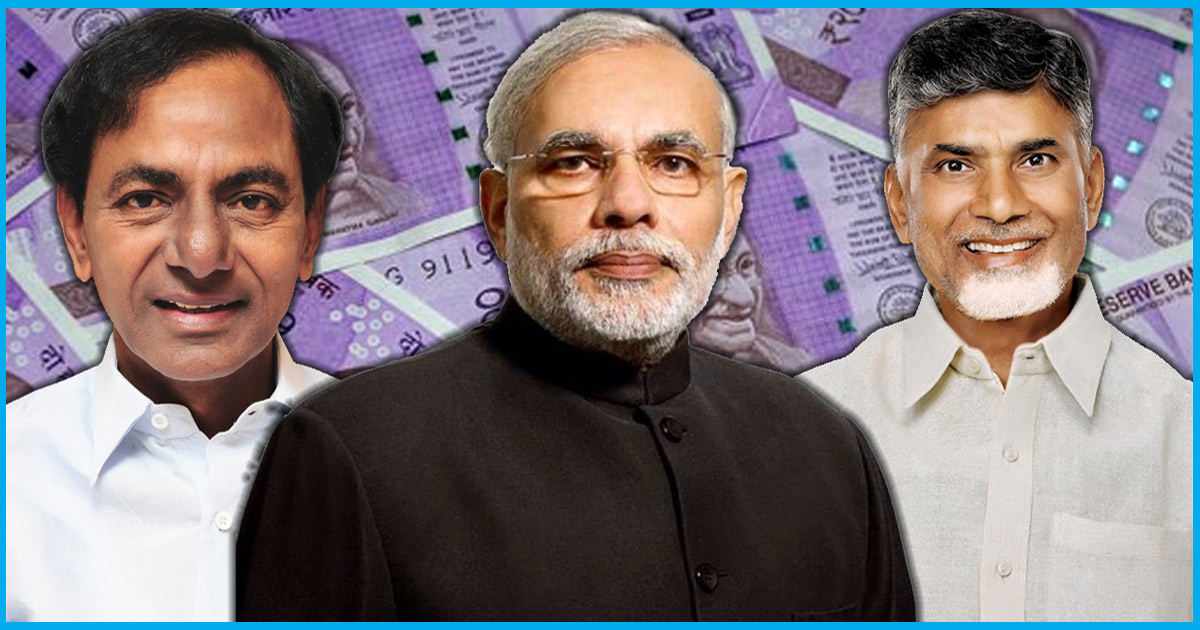
TLI Explains: Ease Of Doing Business Rankings
12 July 2018 6:01 AM GMT
Ease of Doing Business (EoB) is an index published by the World Bank as part of its Doing Business Report. The report is primarily a benchmark study of regulations. The EoB index is an aggregate figure that includes different parameters which define the ease of doing business in a country.
There is also an Ease of Doing Business index for the states compiled as part of the Business Reforms Action Plan 2017 released by the World Bank and the Department of Industrial Policy and Promotion (DIPP). For the year 2017, in the latest index released on July 10, Andhra Pradesh has topped the EoB ranking for states and Union Territories. Andhra narrowly beat its neighbour Telangana in a closely observed contest. The degree of competition can be observed from the fact that the difference in score between Andhra Pradesh (98.4%) and seventh-placed Madhya Pradesh was just over a point (97.3%).
How are the rankings calculated?
This index incorporates many of the parameters on the global EoB index and even a few additional parameters. The ranking is based on 372 reform measures decided by the states and the DIPP in the year through June 2017, against 340 measures in the previous year. This year’s rankings also factored in user feedback. In the past, rankings were based on reforms undertaken by the states and no feedback was taken. The parameters include areas such as construction permits, labour regulation, environmental registrations, access to information, land availability, paying taxes, and single window system among others.
What do the rankings mean?
The ranking in ease of doing business is the reflection of states’ implementation of an action plan adopted by them with the Centre’s help within a given time-frame. It may or may not accurately reflect the extent of business-conducive nature of the states. However, it is an assessment of the willingness of states to improve their business climate to attract investors.
Most states see their performance as a key factor in helping market their state as a profitable investment destination. This enables the forces of competitive and cooperative federalism to help these states redouble their efforts. The game changer was the feedback from businesses, lawyers, architects and electrical contractors. Secretary of the department of industrial policy and promotion Ramesh Abhishek said that next year the entire evaluation would be done based on feedback from the industry and no longer only based on the states’ claims.
Although two states, Telangana and Jharkhand, have implemented 100% of the reforms, however, Andhra Pradesh gained a higher overall score.
Karnataka, ranked eighth in 2017 against 13th in 2016, received the most number of investment proposals. As reported by the Financial Express, Karnataka received almost 40% of the country’s total investment proposal value of Rs 1.9 lakh crore between January and May this year. However, Haryana, which improved its ranking in ease of doing business from 14th in 2016 to third now, hardly attracted any investments (just 0.2% of India’s total investment proposal value between January and May).
While there was stiff competition for the top slots, there were at least three- Arunachal Pradesh, Meghalaya (ranked last) and Lakshadweep – which did not undertake even a single reform. Mizoram, Andaman, Manipur and Sikkim undertook less than 4% of reforms that were listed by the DIPP.
World Bank’s global EoB index
India jumped 30 ranks to secure the 100th position in the latest ease of doing business rankings by the World Bank, in its Doing Business 2018 report, which was released in November 2017. In each of the parameters, the distance to frontier score is evaluated and then aggregated to form the final score. The distance to frontier (DTF) is a measure where ‘0’ indicates the lowest performer while the top performer gets a ‘100’. India’s DTF score on the 2018 report is 60.76.
India, as an emerging economy, is vying for the global spotlight as an upcoming favourite destination for global investment. To aid us in this endeavour, we have chosen to pursue the route of startup policy reforms as suggested by the World Bank
The report is based on the principle that countries with heavier regulation of entry have higher corruption and larger informal economies, but no better quality of public or private goods. It also observes that countries with more democratic and limited governments have lighter regulation of entry.
The effect of improving regulations on economic growth is claimed to be very strong. Moving from the worst one-fourth of nations to the best one-fourth implies a 2.3 percentage point increase in annual GDP rate.
The world bank in its report adds a caveat that it had not included demonetization and its effects on the study because the other countries did not experience such a phenomenon. Also, the report only measures parameters from two cities – Delhi and Mumbai with the former having more weightage (53%).
Why the discrepancy?
The discrepancy here is that WB in its report shows India jumped 30 places based on parameters from only Delhi and Mumbai. However, in the states’ rankings released on July 10, Maharashtra and NCT of Delhi have fared poorly. Maharashtra is at the 13th position with a 92.71 percent score and Delhi at the 23rd with a score of 31.60 percent. Considering that both the reports employ more or less the same methodology, the first thing that comes to mind is whether World Bank should review its methodology and select a larger sample as just two cities from a country like India may not give the correct picture.
In other words, if World Bank had considered other states like Andhra and Telangana, India would probably have jumped even higher on the global list.
 All section
All section













